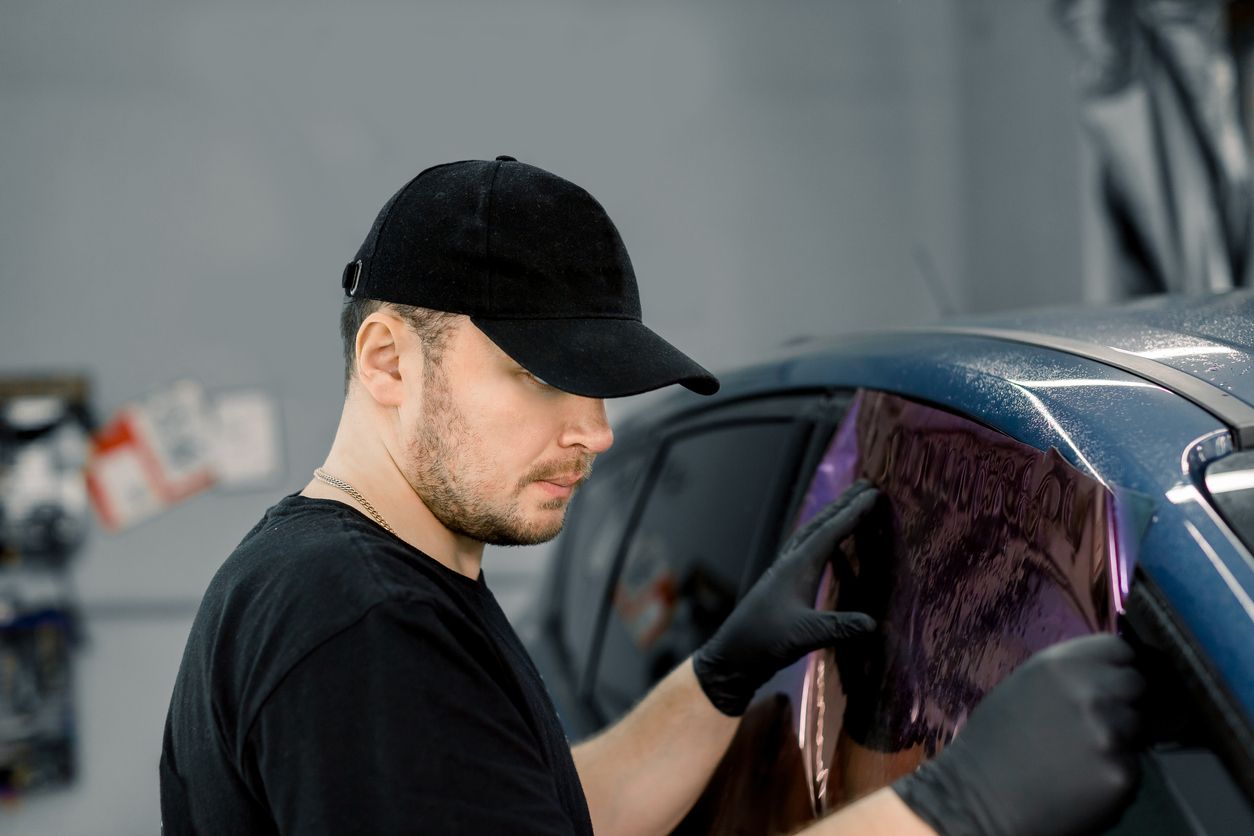Home Window Tinting Rules and Standards: What You Required to Know Before Tinting Your Automobile
Prior to continuing with home window tinting for your vehicle, it is vital to familiarize on your own with the diverse legislations and guidelines that govern this technique across various states. These regulations determine the acceptable levels of color darkness, typically gauged by noticeable light transmission (VLT) percents, and consist of particular stipulations for front windscreens intended at making certain road security.
Review of Window Tinting Rules
Home window tinting laws are often based on variation throughout different territories, mirroring regional guidelines and safety factors to consider. These laws determine the permitted degrees of color darkness and reflectiveness on lorry home windows, making sure that chauffeurs keep ample exposure while likewise shielding versus hazardous UV rays and warm.
Many regulations identify home window tinting based on the Visible Light Transmission (VLT) portion, which shows the amount of light that can go through the home window. Typically, reduced VLT portions symbolize darker tints. Legislations often differentiate in between the front, side, and rear home windows, with more stringent restrictions put on the front windscreen to boost safety for both the driver and other road users.
In addition, some territories enforce limitations on the reflectivity of the tint, preventing extreme glow that could impair visibility. Exceptions to these legislations may exist for individuals with particular clinical conditions calling for additional sunlight defense. Compliance with home window tinting policies is vital, as infractions can cause penalties, required elimination of the color, and possible rises in insurance coverage costs. Consequently, it is essential for automobile owners to acquaint themselves with regional legislations prior to proceeding with window tinting installments.
State-by-State Tint Rules
Understanding the certain window tinting laws in each state is crucial for vehicle proprietors looking for to abide by the law. Each state in the U.S. has established its own collection of rules governing window tinting, which can vary considerably. These policies typically determine the allowed degrees of tint darkness, the kinds of windows that can be tinted, and any kind of clinical exceptions that might apply.
For instance, states like The golden state have stringent limitations on tint darkness for front home windows, while others, such as New Mexico, may allow darker tints. Additionally, particular states mandate details exposure percents for different home windows, consisting of the windscreen, front side windows, and rear windows. It is vital for automobile owners to acquaint themselves with their state's regulations to stay clear of possible penalties or penalties.
Additionally, some states may call for an accreditation sticker label to be put on colored home windows, showing conformity with state laws. Failure to comply with these regulations not just runs the risk of lawful repercussions but can also affect safety and presence while driving. Vehicle proprietors must perform comprehensive research study or get in touch with neighborhood authorities to guarantee full understanding and conformity with state-by-state tint regulations.
Allowed Tint Levels and Types
Numerous automobile proprietors may be stunned to learn that permitted tint degrees and types vary widely throughout various states. Each state has established its very own policies concerning the acceptable darkness and reflectivity of home window color, usually determined by Visible Light Transmission (VLT) percentages. VLT refers to the amount of light that can travel through the colored home windows; thus, a lower portion shows a darker tint.

Furthermore, the kinds of color products enabled can vary, with some states banning mirror-like or metal coatings. It is necessary for vehicle proprietors to familiarize themselves with their state's particular regulations to make sure conformity. Non-compliance can result in penalties, mandatory removal of the tint, or various other legal effects, making it essential to understand these policies prior to continuing with installation.
Medical Exemptions for Tinting
While not all states offer allowances for clinical exemptions regarding home window tinting, those that do identify the requirement for particular people to boost visibility and convenience as a result of clinical conditions. Different clinical conditions, such as lupus, skin cancer cells, and specific eye problems, can render people specifically delicate to sunlight. Consequently, these individuals may need darker colors to shield themselves from hazardous UV rays and glow.

It is necessary to note that despite having a clinical exception, there might still be constraints on the degree of tint enabled. Conformity with state regulations makes sure that individuals are both safeguarded and within legal restrictions. Those thinking about clinical exemptions ought to call their regional Department of Motor Automobiles or equal authority to understand the needs and procedures needed to make an application for an exemption successfully.
Penalties for Non-Compliance
Stopping working to follow home window tinting regulations can bring about significant fines, which vary by state. Legislation enforcement firms are empowered to issue citations for lorries that do not adhere to the defined tinting regulations. These fines commonly include fines, which can vary from modest amounts to several hundred bucks, depending on the extent of the violation and the state in inquiry.
In some jurisdictions, duplicated offenses may result in intensifying penalties or added fines, pop over to this site such as compulsory court appearances. Moreover, non-compliance may require the removal of illegal tinting, frequently at the owner's expenditure. In extreme situations, habitual offenders may deal with suspension of their lorry enrollment till conformity is achieved.
In addition, insurance policy ramifications might arise from obtaining multiple citations for home window color infractions. Insurance providers may see such offenses as an indicator of riskier habits, potentially bring about boosted premiums or difficulty in protection.
To stay clear of these charges, it is crucial for vehicle proprietors to familiarize themselves with their local home window tinting legislations and guarantee that their car complies (Window Tinting). This positive strategy not just prevents legal ramifications but also advertises roadway safety
Final Thought

The majority of regulations identify home window tinting based on the Visible Light Transmission (VLT) percentage, which indicates the amount of light that can pass via the home window. Compliance with click here for more window tinting guidelines is vital, as violations can result in penalties, compulsory removal of the color, and possible rises in insurance costs.Comprehending the specific home window tinting policies in each state is vital for lorry proprietors looking for to comply with the regulation. These policies often dictate the allowable degrees of color darkness, the kinds of home windows that can be tinted, and any type of medical exceptions that may apply.
For instance, states like The golden state have rigid restrictions on tint darkness for front home windows, while others, such as New Mexico, might allow darker colors.
Comments on “Customized Automobile Window Tinting Providers for a Sleek and Trendy Look”